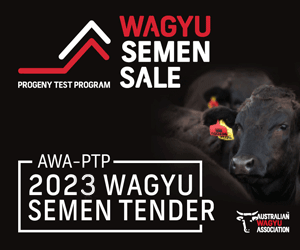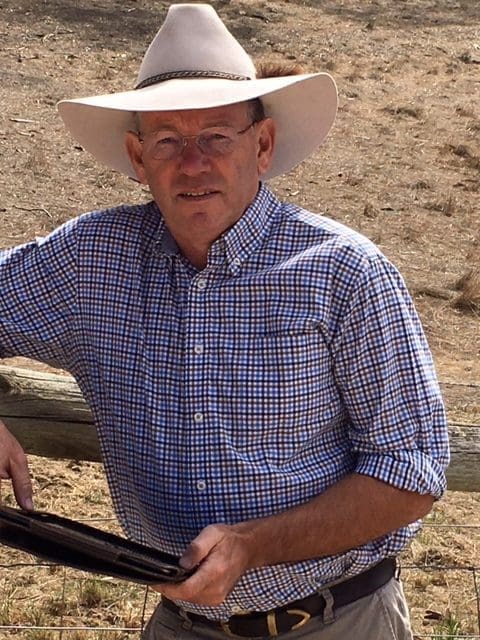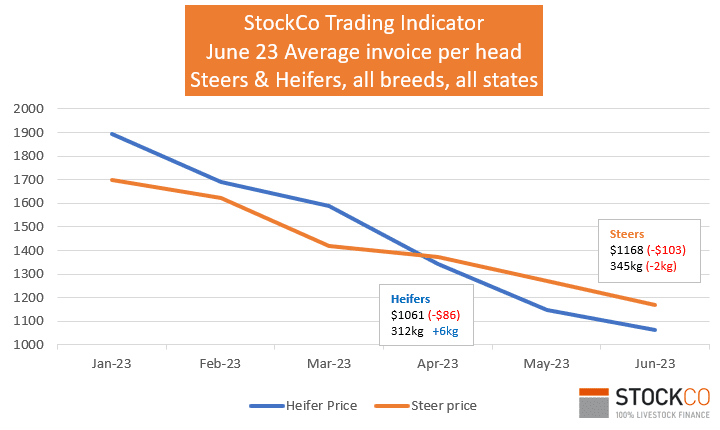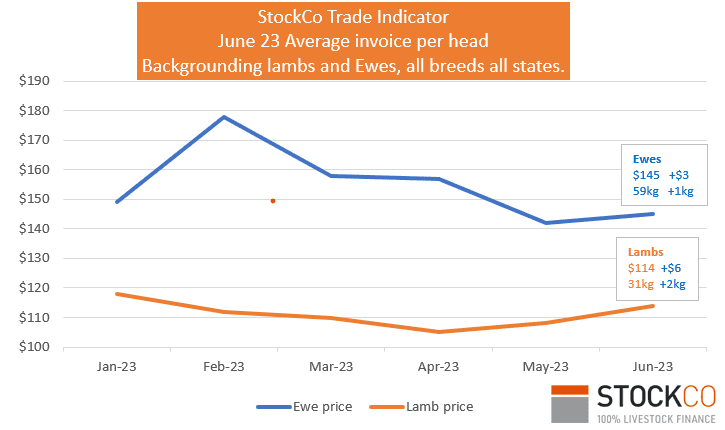Cattle
The bull sale season is here with some outstanding offerings by Auction and Private sale. The professionalism and focus on end user needs by Stud masters has really improved over the last 20 years. I also think some of the breed parochial noise has diminished as we all start to look at the overall benefit to the wider Australian beef industry. Pretty good launching pad for the new Cattle Australia if this is the case.
Understanding the tools: EBV (ASBV) before heading to the bull (ram) sale. There have been some excellent articles recently outlining the underlying science. What I have learnt when training new agents is sometimes the science stops the understanding. If you take the time to read this, it will help you buying sires and definitely help your agency value proposition.
I have asked Marc Greening from Injemira Beef Genetics who supports the Wodonga TAFE training to provide me with an EBV 101 aimed at agents and those interested producers.
Developing your clients beef business:
As an agent looking at developing your clients beef business can be a daunting task when stepping onto a property that perhaps has little direction and focus. The use of performance recording within a seedstock herd can be varied and complicated with seedstock producers all placing different selection pressures on various breeding philosophies. As an agent acting in an advisory capacity, you need to ask pointed questions of your client. Understand the end market and production system then seek out a seedstock producer that has a commercial focus aligned with your clients breeding goals.
 The use of performance recording through mediums such as Breedplan’s Estimate Breeding Values (EBVs) is complex at a client level. Commercial producers and agents may only look at a bull sale catalogue once a year and you are not expected to understand the ‘ins and outs’ of everything that makes up that data set presented for each bull. That is the role of the seedstock herd selling the bulls.
The use of performance recording through mediums such as Breedplan’s Estimate Breeding Values (EBVs) is complex at a client level. Commercial producers and agents may only look at a bull sale catalogue once a year and you are not expected to understand the ‘ins and outs’ of everything that makes up that data set presented for each bull. That is the role of the seedstock herd selling the bulls.
EBV’s in very basic terms is system that generates data that allows the industry to compare bulls for various traits that take out natural influences such as environmental factors including feeding, region and general management, it enables all bulls within each breed to be directly compared, no matter what region or herd they come from.
Step by step process on selecting genetics that will enhance and achieve the breeding goals (target market) of a herd:
- Sit down and evaluate the target market for the progeny of your client? Ask questions such as
- Is the market breed specific
- Feeder or Finishing market
- Grass fed or Grain fed
- Do we need to achieve better MSA compliance- Crossbreeding.
- Do we need bulls that better suit premium processor driven markets
NB: Ignore fads, there are plenty of breeds in Australia to achieve your goals.
- What is the environment the herd runs in?
-
- Is Bos Indicus required?
- Does fertility need to be improved?
- What areas need improvement, looking as much as possible at customer feedback and on farm production levels.
NB: It’s a two way analysis both on farm and what your customer requires.
Once breed has been determined
- Look for a seedstock supplier that is aligned with your target market.
- The seedstock herd should have relatively large contemporary groups enabling strong genetic selection pressures.
- The seedstock herd should incorporate genomic evaluation to achieve higher accuracies.
Selecting the bull: Step by step:
- Work out the areas that herd needs to be improved.
ie: growth, fertility, calving ease, yield, marbling etc
- Go to specific breed society website and print out the percentile table.
NB: You cannot compare direct figures between breeds.
- Look for what traits have been recorded. At a minimum you should have calving data such as gestation length, birth weight, and growth traits, scrotal, eye muscle and marbling along with genomic information.
- Work out a plan of attack. Using your information, target the areas that need to be improved.
eg: Mark in the catalogue bulls in the top 25% for traits you are targeting with a minimum accuracy level. I suggest 60% Accuracy to be confident those figures work.
- Have a big list of bulls, it might be common that half the bull sale catalogue fits your requirements on data.
- Go and inspect the bulls – this is the most important area. Look for structure, confirmation and market suitability.
- Seek advice from the seedstock producer.
In conclusion– the commercial producer and agent don’t need to understand how EBVs are put together, that is the role of the seedstock producer. Use the breed percentile table to understand what data thresholds are required to achieve your goals. Inspect the bulls for structural soundness and talk to the seedstock producer that is aligned with your breeding goals.
Questions: You may ask, shouldn’t I just use the selection indexes presented by each breed society? The selection indexes are basically a summary of all the data set you see that align to a specific market. Then are presented in dollar values. My personal advice is they don’t necessarily align with an individual’s production goals. They can be used as a broad selection filter when first looking at a group of bulls, but in depth analysis of traits identified for improvement in your herd is a far more prudent selection process. This is where an Agent can add real value to their clients.
The agents that study the catalogue before the sale, using this information and understanding what the target market is will be a mile in front with their clients selection process.
Mick Newman Elders Livestock Manager Alice Springs let me know due to good rain south of Alice Springs and the very cold weather since last Thursday the show sale has been cancelled and rescheduled for the 3rd of August. Although disappointing for this annual feature the agents all agreed the animal welfare component was the highest priority. Put the new date in your diary and look at buying some a month closer to spring.
Sam Scott from MAA Livestock and Property, Roma store sale rang with a report on how a feature line at last weeks Roma store sale went. The Gall family present a quality run of EU Angus Charolais cross weaners every year with many repeat buyers. 700 were lined up and saw competition from Longreach, Meandarra, Tara and locals push prices on these cattle 10 – 15 cents better than recent sales. Steers 200 – 280kg made #3.80 – $3.95 and Heifers 180 – 260kg ranged from $2.60 to $3.00 with most heifers going to Longreach.
Feeder numbers in the south seem to be dropping quickly with various producers and agents getting to the end of their sale run or waiting for oats to put weight in this year’s weaner sale purchases. Again this is the normal trend for feeders at this time of the year and market supply and demand pricing starts to activate.
Ron Rutledge, Nutrien Livestock is in the US and Canada on holidays heading towards Calgary. But he did let me know the cattle market is very very strong and once our run of numbers starts to check it bodes well for later in the year.
Cow and calf units. If you have the feed these represent excellent value. Not only are you value adding the calf but the cow as a re-join or hooks option represents a good trade later in the year.
Be careful of the age though as it is difficult to fatten a broken mouth cow in anything but an exceptional spring. Target well bred straight runs between 5 – 7 years and don’t be scared to buy a few less and polish them up.
Wodonga TAFE Agency and Supply chain course starts on the 6th August. Simone Dand let me know an additional 5 nominations came in last week taking the number to 12 with the groups capped at 15. In all between 25 to 30 will attend with training covering Auctions Plus, MLA integrity systems, Livestock Production Advice, Sire selection, End user needs and more.
Sheep
My expected move in lamb price has gone against me with the numbers of unfinished lambs continuing to come with processors still having a back log of contracted lambs as well as the sale yard supply. I still think a lift will appear with the early suckers but my timing was off as I underestimated how many old lambs were left in the paddock.
The one thing I didn’t factor was the change in the dentition rules for lamb and hogget. In the past the teeth eruption moved a lamb immediately to hogget so lambs were sold a full month earlier to avoid this. Speaking to several agents the new classification of “in permanent use” has definitely extended the sale window with a win for producers and processors alike. However some lambs are pushing the window between teeth and fattening.
New season lamb. Suckers are still a little way off and new season lamb pricing will start to appear soon as supermarkets traditionally activate their sales campaigns. I would be a little reserved at booking new season lambs on the old lamb grids as you may do yourself a disservice.
Best wool Best lamb conference in Bendigo last month was very well attended with just under 400 attending. I won’t lie, it was bloody cold but the content delivered was on the money. Worth logging on to the Agriculture Victoria site once the presentations are put up to view.
With my new role at rma network I caught up with several member agents last week with Westech Ag’s Stuart Kyle, Kaniva; DMD’s Andrew McIllree, Nhill and Ellis Nuttall, Rupert Fawcett in Bendigo.
The main thread of the chats was about lambs. Price was definitely a part of the conversation however the difficulty in finding kill space and the delay in delivery on contracted lambs was top of list. Luckily many areas have had a favourable autumn feed position but if it had of been a tight autumn as was forecast by the BoM no good comes from holding on waiting for the truck to back in.
One agent in the Wimmera was delivering the last of their clients lambs this week. The good part is they are on some of the early year contracts at $7.80 & $8.00 and even though the delivery has been longer than expected the return was well worth it.
I know I have said this before, but contracts are an extremely important tool for the livestock industry. Not only for fixing price and numbers for vendors and buyers but also setting the agreed delivery date. Some simple tightening of these basic contract principals will remove a lot of stress AND phone calls from all concerned. However if you don’t sign contracts best of luck applying any pressure, both ways.
91 SIL ewe project update
Well I have followed the instruction from my 2 Livestock production advisors. 2 days before lambing we had nearly 4 inches of rain so I was expecting an absolute train wreck and regretting starting this project real time in my article. But in for a penny in for a pound, so this is what we have done. Vaccinated and drenched, 4 bags of lambing loose lick at 14.5% magnesium and 1 large round of oaten hay in a cattle ring.
So far we have lost 6 lambs – 3 because of weather, 2 from our resident foxes and 1 through misfortune. The ewes are lambing very well and twins are arriving in very good order which gives me absolute confidence the advice given is on the money. Still 4 weeks left but twins are in the majority which is what we were aiming for. As for the old Winchester 222, she has got 2 foxes with 3 shots – one was the old local dog who I think is a professional lamb killer, not any more…
Opportunities
- Heifers are still worth the money.
- Cow and calf units represent good value
- Keep an eye on the August – September slaughter market.
- Start thinking about your sucker lamb sale program.
- Understand your target market and buy sires accordingly.
- Finish off the last of your good lambs, sell the also rans now and start again.
- Don’t treat your merino ewes like second rate citizens.
- When the job is a bit tough continue to train staff




HAVE YOUR SAY